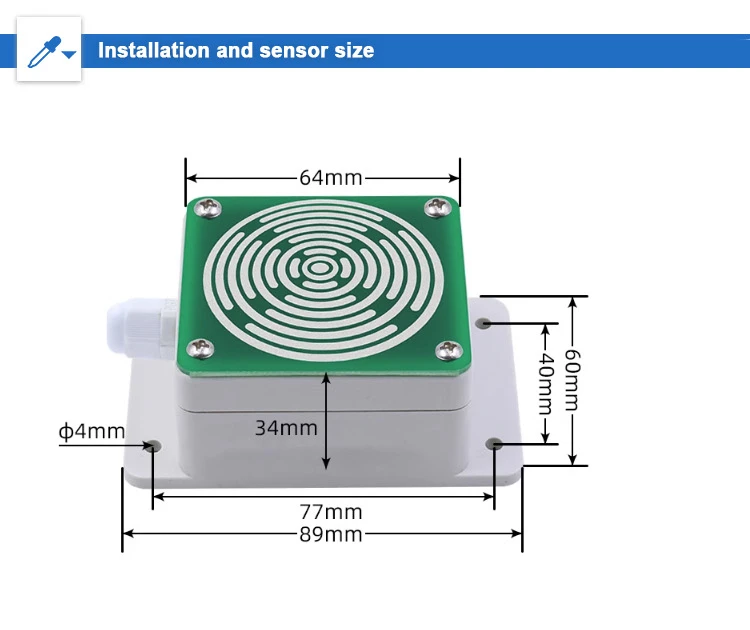The functioning principles and applications of rain and snow sensors
Rain and snow sensors are important forms of natural precipitation. They form due to changes in the atmosphere and are essential for Earth’s water cycle. These weather events give fresh water to land ecosystems. This is very important for plants and animals far from rivers or lakes.
Rain is the main cause of surface runoff. It also plays an important role in recharging groundwater.
Precipitation occurs when water vapor in the air turns into liquid or solid and falls to the ground. This can be rain or snow.
However, rain does not fall evenly. Its uneven spread and unpredictable timing can cause extreme weather. These extremes include floods, waterlogging, and droughts.
While “rain gauges” are well-known tools for measuring rainfall, rain and snow sensors get less attention. These sensors detect precipitation. This article will explain how these sensors work and where they are used in different fields.
Rain and Snow Sensors
Rain and snow sensors are important for modern weather monitoring. Their main job is to tell if it is raining or snowing. These devices are used in many fields. They help with weather forecasts, farming, and industry.
They are also helpful in marine areas, environmental monitoring, airports, ports, and transportation. And mainly check if it is raining or not.
Working Principles
**Monitoring Rainfall**
Rain and snow sensors have grid electrodes inside them. These electrodes use water’s ability to conduct electricity to sense rain. When raindrops hit the sensor’s grid, they cause a short circuit. This helps the sensor track rainfall well.
**Monitoring Snowfall**
For snow detection, these sensors have a built-in heating system. This system stops ice or condensation from forming in very cold or humid weather. By keeping a steady heat, they provide accurate measurements even in tough winter conditions.
Practical Applications
**Applications in Rain Detection**
Rain sensors are very helpful in greenhouses. When heavy rainstorms occur, the sensor detects rain and sends data. This data connects with automated systems in the greenhouse.
These systems can turn on rain-prevention tools to protect crops. At the same time, they inform greenhouse managers about changing conditions. This way, managers can act quickly to reduce possible losses.
If farm managers cannot watch operations closely, the system can send alerts for unusual data. This helps growers check conditions from afar. They can make necessary changes, even if they cannot get to the greenhouse right away.
In fully automated settings, connected systems can control the greenhouse environment. They use set parameters to ensure the best conditions for vegetable growth, no matter the weather.
**Applications in Snow Detection**
Snow sensors help improve transportation systems like roads and railways. For example, in northern China, icy roads are common in winter. These sensors can track snowfall and weather conditions as they happen.
Bad weather often leads to highway closures for safety. However, unclear data can slow down decision-making. This can leave cars stuck on the road.
Snow sensors help by detecting snowfall. They also reduce data errors from ice or dew with their heating feature.
When they collect snowfall data, these sensors send information to weather stations on highways and railways. This data goes to cloud platforms for analysis. Once confirmed with other sensor data, drivers on the road are notified. They can then prepare or change their travel plans based on the latest weather forecasts.
Conclusion
Rain and snow sensors work well with weather monitoring systems. They help manage issues caused by rain and snow in many places. These sensors help protect farms and keep transport safe in bad weather. They are important tools for handling Earth’s changing climate.
